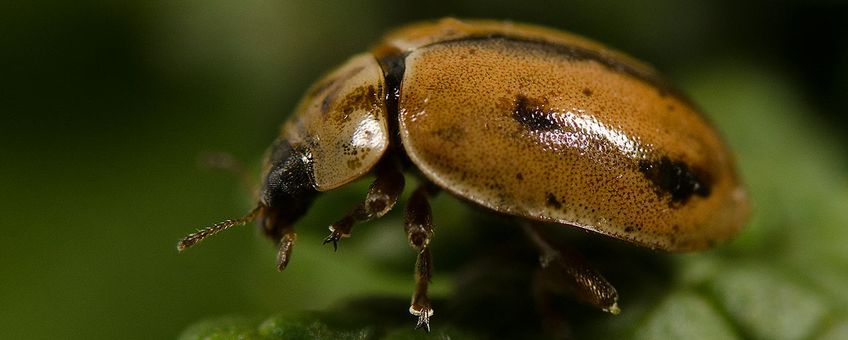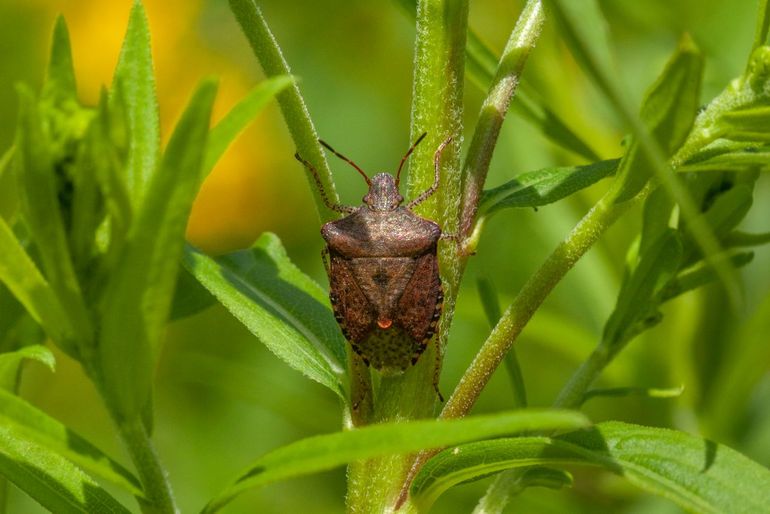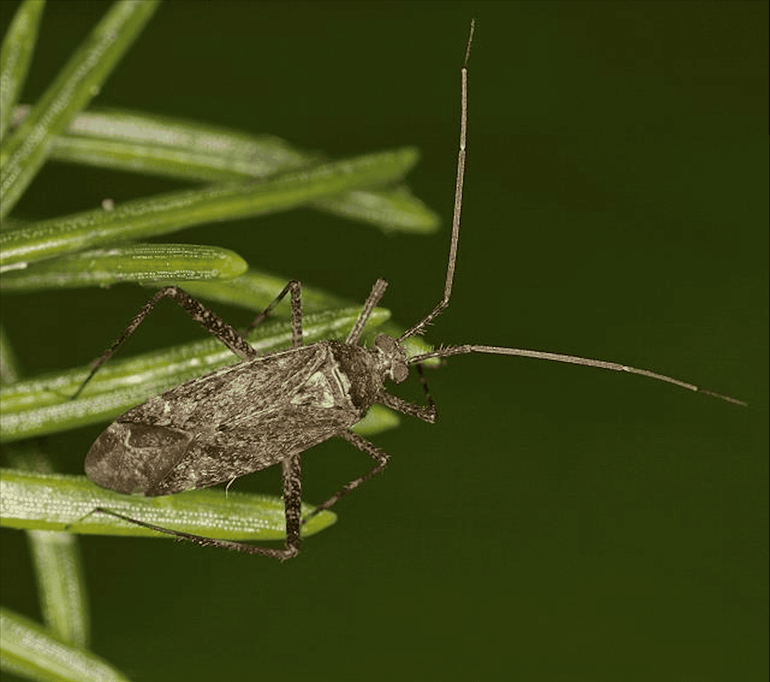
O Christmas tree, o Christmas tree how lovely are thy insects
EIS Kenniscentrum Insecten, Naturalis Biodiversity CenterThe figure of 25,000 is not plucked out of thin air. It is taken from a study by Norwegian researcher Bjarte Jordal. During his research on Norwegian Christmas trees, he found spruces and pines in which as many as 25,000 insects, spiders and other crawlers lived. Similar research has not (yet) been done in the Netherlands, but the fact that all sorts of creatures can be found in your Christmas tree is inevitable. "All kinds of things always live in and around trees. Indeed, different species of plants and animals depend on them", says Aglaia. "The same goes for Christmas trees. So when you bring them into your home, you bring in the 'skeleton' of an entire ecosystem."
Aphids
One insect that likes to spend the winter in Christmas trees is the black stem aphid (Cinara confinis). Branch aphids are aphids that are not limited to just the leaves, but also suck sap from branches, twigs and roots, among others. In fresh trees, the sap keeps flowing, but in Christmas trees – especially those that have been cut down – the sap runs out. The aphids become hungry and start looking for food. On top of that, eggs may have been laid on the needles. The warmth of your home gives the nymphs the idea that spring has arrived, and they hatch their eggs. They, too, cannot find enough food in the tree. "You don't have to fear the black stem aphid," Aglaia says. "The insects stay in or under your tree. They are looking for sap from the tree and since they can't find it, they will unfortunately die."
Black stem aphid (Cinara confinis) (Source: Roy Kleukers)
An array of arthropods
Other Christmas guests are the bugs, for example Phytocoris intricatus. This insect hibernates in spruce trees and lays its eggs there as well. As with the black stem aphid, these bugs think spring has begun due to the warmth of your living room. As a result, the larvae crawl out of their eggs. Again, a lack of food will keep the insects from surviving."
And there are many other arthropods that might occur," says Aglaia. Think of bark beetles, ladybugs, spiders, mites, springtails, (parasitic) wasps or, for example, the green stink bug. Aglaia finds the latter insect special: "In summer they are bright green, but in winter they are brown and almost invisible against the trunk of a (Christmas) tree." The green stink bug does not shed its skin, but changes color, "That way it adapts optimally to the season."

Harmless
Note that these bugs are completely harmless both for yourself and your pets. Tales that there would also be ticks in your Christmas tree are scaremongering, according to Aglaia: "In very exceptional cases there could be one in your tree, but that chance is very small."
There's not much you can do about the bugs in your tree, and there's no need to. Aglaia: "After all, you're bringing in not just a tree, but an entire ecosystem." If you would like to limit the number of bugs in your Christmas tree, you can pat out the tree outside before bringing it inside. "But be sure to put a white sheet under it," Aglaia says. "That way you can get a good look at what creatures are living in your tree. That's not only incredibly interesting, but also very educational."

Text: Sietske Hoekstra, Naturalis Biodiversity Center
Photos: Getty Images (lead photo: ladybird beetle); L. Skipper
Movie: Roy Kleukers, EIS
